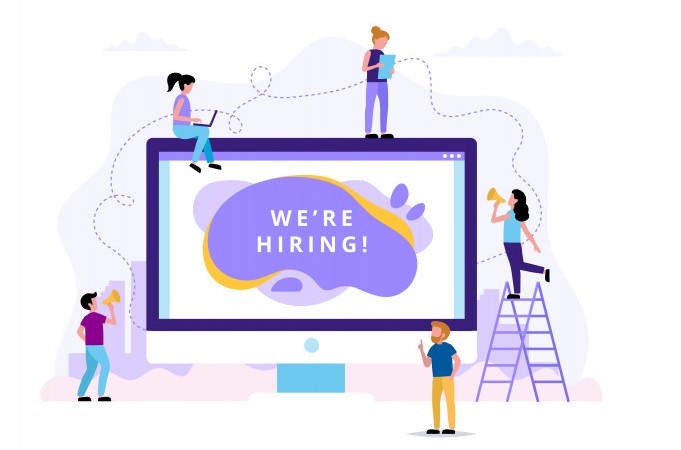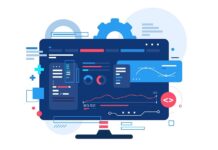Today, procurement departments are playing significant roles in business growth and strategies, and technology is becoming an essential enabler for electronic suppliers. As platforms aid organizations in automating their entire source-to-pay cycles, procurement solutions offer an array of advantages that cannot be obtained with traditional processes or Excel sheets.
In facilitating suppliers to handle contracts, assess spend, and receive better control over the procurement method, the software automates functions such as: purchase order creation and validation, electronic submission of PO to vendors, confirming orders, inventory management, trend analysis, data collection, and more.
Leveraging a robust procurement system enables a great deal of the procedure to be automated, and the whole process is electronic. This minimizes error potentially and saves time, thereby saving the company money.
In order to foresee the effect of modern practices and technologies, and later develop a roadmap for maximizing the usefulness, procurement leaders require a complete understanding of present procurement trends.
- Building Vendor Relationships
At some point, you have certainly had a discussion within your team regarding building better supplier relationships. Everybody agrees that it is a strategic priority for companies. Often we notice that procurement companies follow manual methods that are inconsistent across supplier segments and categories.
However, in the year 2020, we expect to see a more prosperous and structured approach embraced by forward-thinking teams. This approach will start with vendors being divided into tiers, separating the ones that play a pivotal part in the supply chain, and are strategic from the ones that are not.
The upcoming step will notice the deployment of a set of tools and measures for every tier, aiding to better track strategic partners, and enhance relationships wherever required. Maybe you have heard this idea before, but the difference is that analytical capabilities and technology exist to make the needed methods both economically useful as well as manageable. Generally, the result will be more innovative and broader that foster connectedness between vendors and clients.
- Digital Transformation
The ongoing digital transformation has become imperative for the best performing procurement functions. Those who find themselves behind the times will need to play catch-up in 2020, especially as most companies are likely to be on their own digital transformation journey.
Various technologies are now available in the procurement space than before. But the trickiest part is about understanding which procurement tools to select and whether to go for end-to-end services. What is right for your business will depend on specific circumstances. We can expect to see massive investments in tools targeted at contract management, risk management, and spend analytics this year. Nurturing this will emphasize quality data, complete visibility, and dive deeper when needed.
- Blockchain will be Used in Procurement
Today, companies are starting to realize the potential of powerful technology. The blockchain introduces new levels of security and speed to processes ranging from P2P to contract management to inventory audits, but has not reached the ubiquity enjoyed by other technologies.
This will change in 2020 as more leaders are embracing the versatility and security on hand, and the blockchain shifts from an optional add-on to a standard component of next-generation automation and security systems.
- Big Data Analytics
Interconnectivity across supply chains signifies everything starting from production to AP now yields good sources of data ripe for analysis that creates insights driving cost reduction and value generation. Big data is one of the major disruptive technologies ever to hit the procurement operation, re-contextualizing procurement methods, supporting the analysis and collection of data from external and internal sources, and allowing more accurate analysis of data to enhance vendor relationships, risk management, decision making, and much more.
Big data will undoubtedly play a crucial role in procurement companies in 2020, mainly since strategic sourcing and process optimization depend heavily on having accurate and real-time data to examine.
- Integrated Data Ecosystem Improves Visibility of Patterns Across the Company
The data captured from the IoT will allow real-time monitoring of outcomes via constant feedback loops across assets. Asset-intensive companies will link the data across the business effectively and connect to vendors, allowing touchless procurement in the next few months. The process will create an efficient data platform to inform decision-making around spend and purchasing patterns, vendor portfolios, contract fulfilment, and catalogue management.
- Bot-purchasing and Voice-activated Experiences will be the Rule
Purchasers in the future will be supported by seamless buying experiences, regardless of underlying technology solutions already in place. What can this look like? Imagine voice-activated purchasing experiences for services supported by natural language search as well as virtual assistants. SutiProcure leaders are positioned to lead the path the way when it comes to aiding new ideas and bringing valuable transformation to their companies. By experimenting with multiple ways of doing things, enabling significant initiatives to be at the forefront, and continuously striving for transparency- you as your organization’s sourcing hero will come to a point when it comes time to align procurement strategy with today’s growing procurement trends.








